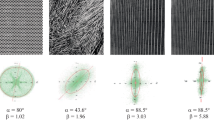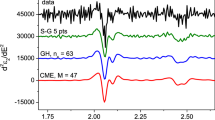Abstract
THE measurement of optical anisotropy is more difficult in photoelastic analysis than in other fields because of the variation in the birefringence from point to point. In addition, in three dimensional “frozen” systems the relative retardation is at most a few wavelengths, frequently less than one, and a discrimination of 0.01 wavelength can produce an accuracy of solution of only 5–10 per cent. The method at present in use is to recognize conditions of minimum intensity of transmitted light under various orientations of optical filters of various kinds1. An alternative method using rotating filters would seem to be feasible, and might lead to automatic recording of all the optical information needed to evaluate the stresses in an elastic system.
Similar content being viewed by others
References
Tardy, H. L., Rev. d'Optique, 8, 59 (1929).
Author information
Authors and Affiliations
Rights and permissions
About this article
Cite this article
SNELL, C. Towards Automatic Measurement of Birefringence. Nature 214, 78–79 (1967). https://doi.org/10.1038/214078a0
Received:
Revised:
Issue Date:
DOI: https://doi.org/10.1038/214078a0
- Springer Nature Limited





